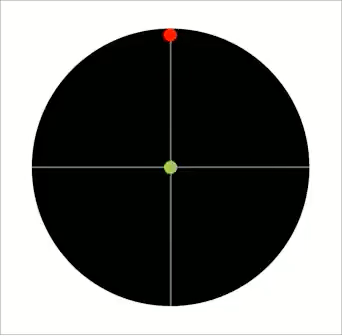Have you ever seen a mind-bending illusion that left you struggling to believe in reality? This Brusspup’s Crazy Circle Illusion was a viral sensation that swept the internet and left viewers scratching.
In this illusion, multiple white dots appear to move in a perfect circle around a larger red circle, but is that really what’s happening? I’ll dive into the science behind the Crazy Circle Illusion and explore why your eyes and brain might be tricking you.
The motion of those little circles reminds me of my Spirograph toy, which was a great toy for getting beautiful illustrations. If you have never had a Spirograph, you should definitely get one!First, let’s break down the mechanics of the illusion. The shapes that make up the Crazy Circle Illusion are called cycloids, formed by tracing a point’s movement on a circle as it rolls. Depending on how the inner circle is rolled, there are different types of cycloids, like epicycloids and hypocycloids.
When a circle rolls along a straight line, you can break down its motion into horizontal and vertical components using trigonometric functions like sine and cosine. These components are not constant and depend on elapsed time – starting and ending at zero and accelerating and decelerating in between.
So how does all this translate into the Crazy Circle Illusion? The white dots you see are not actually moving in a perfect circle around the red circle. Instead, they are each moving independently in a cycloidal pattern that creates the illusion of circular motion. When viewed together, the dots’ movements are related but not synced up, creating a mesmerizing effect that’s difficult to process.

But why does the illusion work so well? Our brains rely on visual cues and patterns to make sense of our surroundings. When we see the movement of the white dots, our brains attempt to process them as one cohesive object, like a wheel or a circle. However, the independent movement of each dot creates a visual conflict that confuses our brains and makes the illusion appear even more convincing.
Another factor that contributes to the success of the illusion is the use of contrasting colors. The white dots stand against the red background, drawing our eyes to their movement. In addition, the illusion is presented in a continuous loop that further tricks our brains into seeing a smooth, circular motion.
The Crazy Circle Illusion is a fascinating example of how visual information can trick our brains. By understanding the mechanics behind the illusion, we can gain a new appreciation for the complex processes that govern our perception.
Whether you’re a fan of optical illusions or just intrigued by the science of perception, the Crazy Circle Illusion will leave a lasting impression. So the next time you see those eight white dots spinning around that red circle, remember that things are not always what they seem.
You may also find these interesting:
• The Best 25 Puzzle Books for Adults: Unravel the Mysteries of the Mind
• Can You Draw a Perfect Circle!
• Ambiguous Cylinder Illusion
• Optical Illusionist by Sugihara Kokichi
• Floating Cube





